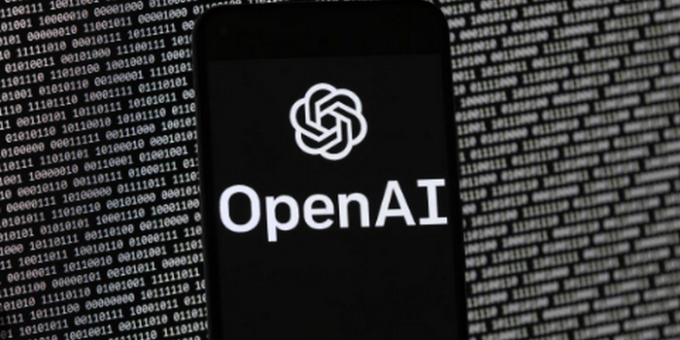
OpenAI has recently announced significant improvements to its AI voice assistant, marking a major leap forward in conversational artificial intelligence. The upgraded assistant boasts enhanced natural language understanding, more human-like responses, and improved contextual awareness, making interactions smoother and more intuitive than ever before.
As AI voice assistants become increasingly integrated into daily life—from smart home devices to customer service applications—OpenAI’s advancements position it as a key competitor in the rapidly evolving AI landscape. This article explores the new features, technological breakthroughs, and potential implications of OpenAI’s improved voice assistant.
The Evolution of OpenAI’s Voice Assistant
From Text to Speech: A Brief History
OpenAI initially gained fame with its text-based models, such as GPT-3 and GPT-4, which demonstrated remarkable language generation capabilities. However, integrating these models into a seamless voice interface presented new challenges, including real-time processing, emotional tonality, and reducing latency in conversations.
With the latest updates, OpenAI has refined its voice synthesis technology, enabling more fluid and natural-sounding interactions. The assistant can now handle interruptions, adjust tone based on context, and even detect subtle nuances in user intent.
Key Improvements in the Latest Version
- Enhanced Natural Language Processing (NLP):
- Better understanding of complex queries.
- Improved handling of ambiguous or incomplete questions.
- Reduced reliance on predefined scripts, allowing for more organic dialogue.
- Emotional Intelligence & Tone Adaptation:
- The assistant can modulate its tone to sound more empathetic, professional, or casual based on the conversation.
- Detects user frustration or confusion and adjusts responses accordingly.
- Reduced Latency & Faster Response Times:
- Near real-time interactions, minimizing awkward pauses.
- Optimized backend processing for smoother exchanges.
- Multimodal Capabilities (Future Potential):
- While currently focused on voice, OpenAI is likely working toward integrating visual and contextual data (e.g., interpreting images or gestures in future iterations).
How OpenAI’s Voice Assistant Stacks Up Against Competitors
Comparison with Existing Voice Assistants
| Feature | OpenAI’s Assistant | Amazon Alexa | Google Assistant | Apple Siri |
|---|---|---|---|---|
| Context Retention | Excellent | Good | Very Good | Fair |
| Emotional Tone | Advanced | Basic | Moderate | Basic |
| Latency | Very Low | Moderate | Low | Moderate |
| Multilingual | Strong | Good | Excellent | Good |
OpenAI’s model excels in maintaining context over long conversations, a weakness of many existing assistants. For example, if a user asks follow-up questions or changes topics mid-conversation, OpenAI’s assistant can track the discussion more effectively than Alexa or Siri.
Unique Advantages of OpenAI’s Approach
- Generative Responses: Unlike rule-based assistants, OpenAI’s model generates answers dynamically, leading to more creative and flexible interactions.
- Continuous Learning: While not fully autonomous, the system improves through user interactions (within privacy constraints).
- Developer-Friendly API: OpenAI allows third-party integrations, enabling businesses to customize the assistant for specific use cases.
Potential Applications of the Improved Voice Assistant
1. Customer Service & Support
- 24/7 Availability: Businesses can deploy AI voice agents to handle routine inquiries, reducing wait times.
- Personalized Assistance: The AI can access customer history (with permission) to provide tailored recommendations.
2. Healthcare & Therapy
- Mental Health Support: Voice assistants could offer preliminary counseling or reminders for medication.
- Accessibility: Helps visually impaired users navigate services more efficiently.
3. Education & Language Learning
- Interactive Tutoring: Students can practice languages or get explanations in real time.
- Personalized Learning: Adapts to the user’s pace and comprehension level.
4. Smart Homes & IoT
- Seamless Control: More intuitive voice commands for home automation systems.
- Predictive Assistance: Anticipates user needs (e.g., adjusting thermostat based on routine).
5. Entertainment & Gaming
- Dynamic Storytelling: AI could generate interactive narratives in games or audiobooks.
- Voice-Activated Content: Users might request customized news summaries or jokes.
Ethical and Privacy Considerations
While the advancements are impressive, they also raise important questions:
Privacy Concerns
- Data Security: Voice assistants process vast amounts of personal data. How does OpenAI ensure this information is protected?
- Consent & Transparency: Users should know when they’re interacting with AI and how their data is used.
Misinformation & Manipulation Risks
- Deepfake Voice Potential: Could this technology be misused to impersonate individuals?
- Bias in Responses: Ensuring the AI doesn’t reinforce harmful stereotypes or misinformation.
Job Displacement Fears
- Will AI voice assistants replace human roles in customer service, therapy, or other fields?
OpenAI has emphasized its commitment to ethical AI, but ongoing scrutiny will be necessary as the technology evolves.
The Future of AI Voice Assistants
Short-Term Developments (Next 1-2 Years)
- More Human-Like Pauses & Filler Words: Making interactions feel even more natural.
- Customizable Voices: Users may select or even clone their preferred voice styles.
Long-Term Possibilities (5+ Years)
- Full Emotional Recognition: The AI could detect user mood from voice tone and adjust dynamically.
- Integration with AR/VR: Voice assistants could guide users in virtual environments.
- True Multimodal Interaction: Combining voice, text, and visual cues for richer experiences.
Conclusion
OpenAI’s improved voice assistant represents a significant milestone in AI-driven communication. With superior contextual understanding, emotional intelligence, and response fluidity, it sets a new standard for voice-enabled interactions. However, as with any powerful technology, responsible deployment and ethical considerations must remain at the forefront.
As OpenAI continues refining its models, we can expect even more groundbreaking innovations—bringing us closer to a world where conversing with AI feels indistinguishable from talking to a human. The future of voice assistants is here, and it’s only getting smarter.
